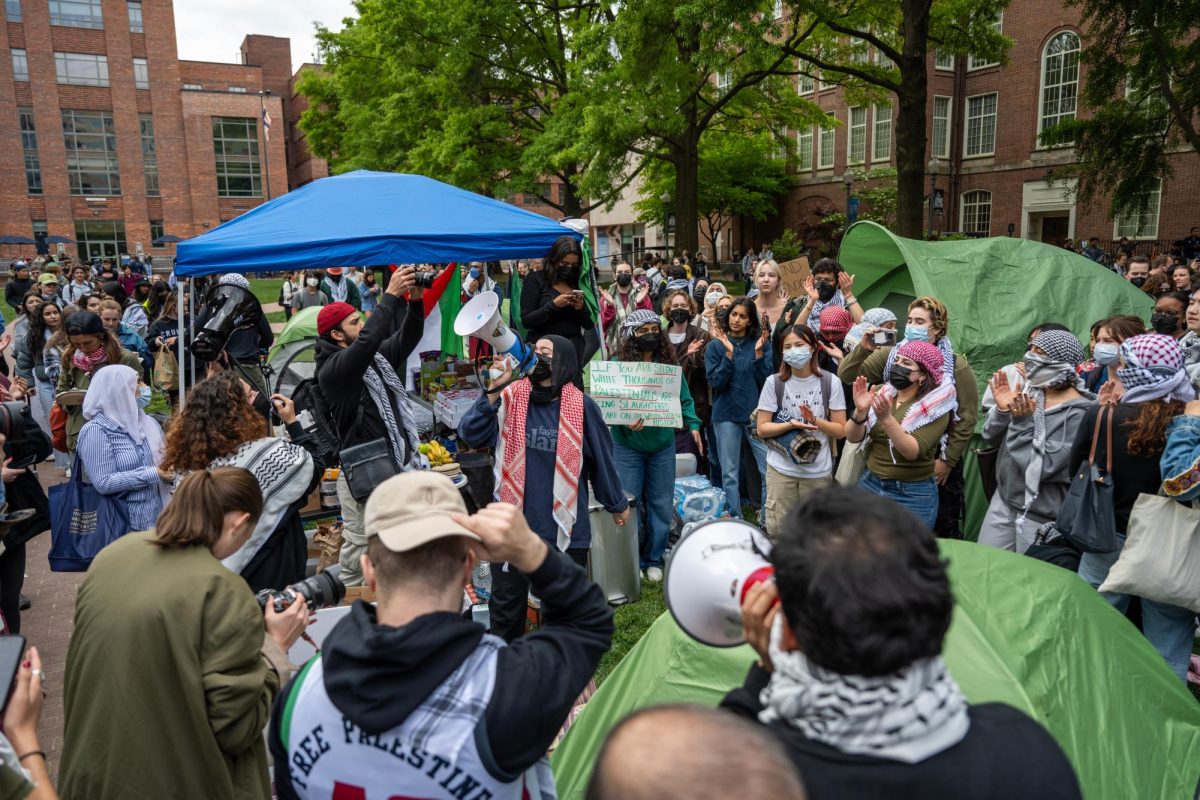GW alumnus Audrey Quinby has had a tough time in Iraq. She lost her Army truck this June to a bomb. She had to pack up and inventory the personal effects of a comrade killed in action.
But when asked what her most intense experience has been, she can’t single anything out.
“Everyday.take your pick,” Quinby wrote in an e-mail from Baqubah, Iraq.
“I’ve seen all kinds of people shot, from a 5-year-old with his head blown apart to a 70-year-old woman spitting up blood from internal injuries.”
Quinby oversees more than 30 soldiers and is responsible for millions of dollars worth of equipment as the platoon leader for the Third Platoon in the Diyala province city.
Like Reserve Officers’ Training Corps students across the country, Quinby’s career with the Army began as a GW in the Georgetown-based consortium. The HOYA Battalion pulls students from Georgetown, GW, American, Catholic and Marymount universities and offers partial and full-tuition scholarships to some.
The HOYA Battalion consistently stays on par with U.S. Army expectations for the program’s recruitment numbers. But the Army as a whole has been struggling to meet monthly goals this summer and narrowly exceeded July’s monthly target. This was the first time the Army achieved their recruitment goal in three months.
“Everyone who signs up now knows what they’re getting themselves into,” said Richard Murphy, a GW law school graduate who works in recruiting for the HOYA Battalion. “The risks are very real right now.”
The military has turned to raising monetary incentives for incoming recruits, relaxing previous restrictions pertaining to drug and criminal records and even bumping the maximum age for enlistment to 42. But the recruitment numbers for the Georgetown based Army ROTC program has not followed this downward national trend.
Murphy, who was editor in chief of The Hatchet, said the battalion at Georgetown is under instruction from the Army to commission 20 officers each year. Approximately one-third of other ROTC programs do not, he said.
“For four straight years we’ve hit our mission,” Murphy said. “We don’t have problems like other programs. Not only that, but GW – this past year in particular – has been the biggest part of the Georgetown program. Not only have we met our mission but GW kind of led the way.”
Of the 110 cadets from the five consortium schools this academic year, 38 are GW students. Last year, 35 students from GW were enrolled in the program.
Captain David Hutchinson, the scholarship and enrollment officer for the HOYA Battalion, attributed this fact to the social network at GW.
“ROTC, I look at as kind of being its own fraternity,” Hutchinson said. “When you have a growing number of students at a university, they have friends, and we get a lot of recruits from people that know somebody.”
He said the high number of students from all five schools in the battalion is partly a testament to the quality of the program. Hutchinson noted that at the Leadership Development Assessment Course, a camp that ROTC students nationwide attend during their junior year, the HOYA Battalion consistently produces scores well above the national average.
“Naturally, you’re going to gravitate toward a program that sets you up for success,” Hutchinson said. “GW being the most expensive school in the country, being able to provide scholarships for students at these institutions helps out on the money side of the house.”
Last year, the ROTC program funded about $1.2 million in scholarships for GW students. Murphy said GW’s steep tuition plays a role in the University’s majority constituency within the HOYA’S Battalion.
“GW likes the fact that we give them a lot of money,” Murphy said. “I don’t think it’s because of their patriotism that they’re accommodating toward us. When we give a student a $39,000 scholarship, that frees up a lot of financial aid money.”
Incoming GW freshman Paul Richardson, who received ROTC scholarships from multiple schools, selected the HOYA Battalion. He attributed his decision to his interest in D.C., the size of the battalion and the quality of its cadets.
Richardson said that GW students’ interest in politics and the University’s location are contributing factors to the GW majority at the Georgetown Army ROTC.
“I think that since the GW students are especially involved in politics they are naturally drawn to serve in the military,” Richardson said. “I’m not sure whether it’s because serving in the military has always been a good stepping stone to a political career or because both political and military careers focus on public service or if it’s something else. I have no doubt GW’s location contributes to its large number of AROTC participants.”






